If you find a mistake or if you have suggestions for additional terms, please drop an E-Mail to [email protected]
Glossary - Terms and DefinitionsGlossary - Terms and Definitions
More more details see >>> PCAOM >>>
PCAOM ist the abbreviation for Polychromatic Acousto-Optic Modulator. Unlike an AOM (acousto-optic modulator), which can only deflect a single wavelength, the PCAOM is able to deflect several different wavelengths at the same time.
PCAOMs were used for laser shows of gas laser systems in order to control blanking and color (fading) behaviour.
For more details see >>> AOM >>>
What is a party laser?
A party laser is a show laser light system for smaller entertainment events, for example in clubs, discotheques, pubs, and bars or for private use. Party lasers are able to create laser beams as well as effects, such as animated images and patterns, that may be projected on different kind of surfaces. Producing laser effects set to music party lasers may additionally be used with smoke and fog systems to top off the audio-visual effects. These party laser systems are either single or full color systems and are usually combined with optical equipment such as mirror balls, projection screens, remote projector heads, and other devices, to display different kinds of beam effects.
Which show laser ist the best party laser?
The Laserworld Ecoline Series and Club Series offer ideal devices for the use at small to midsize parties. For larger venues we recommend the Laserworld Diode Series and Proline Series. And if you want to add a special effect, have a look at the Beambar series.
Beach Party Braeunlingen 2012
IMG_5265_web.jpg
https://www.laserworld.com/images/stories/2012/Braunlingen_beachparty_2012/IMG_5265_web.jpg
IMG_5269_web.jpg
https://www.laserworld.com/images/stories/2012/Braunlingen_beachparty_2012/IMG_5269_web.jpg
IMG_5274_web.jpg
https://www.laserworld.com/images/stories/2012/Braunlingen_beachparty_2012/IMG_5274_web.jpg
IMG_5283_web.jpg
https://www.laserworld.com/images/stories/2012/Braunlingen_beachparty_2012/IMG_5283_web.jpg
IMG_5288_web.jpg
https://www.laserworld.com/images/stories/2012/Braunlingen_beachparty_2012/IMG_5288_web.jpg
IMG_5330_web.jpg
https://www.laserworld.com/images/stories/2012/Braunlingen_beachparty_2012/IMG_5330_web.jpg
IMG_5338_web.jpg
https://www.laserworld.com/images/stories/2012/Braunlingen_beachparty_2012/IMG_5338_web.jpg
IMG_5346_web.jpg
https://www.laserworld.com/images/stories/2012/Braunlingen_beachparty_2012/IMG_5346_web.jpg
IMG_5351_web.jpg
https://www.laserworld.com/images/stories/2012/Braunlingen_beachparty_2012/IMG_5351_web.jpg
IMG_5494_web.jpg
https://www.laserworld.com/images/stories/2012/Braunlingen_beachparty_2012/IMG_5494_web.jpg
IMG_5546_web.jpg
https://www.laserworld.com/images/stories/2012/Braunlingen_beachparty_2012/IMG_5546_web.jpg
IMG_5295_web.jpg
https://www.laserworld.com/images/stories/2012/Braunlingen_beachparty_2012/IMG_5295_web.jpg
More information on party lasers
- Find Your Laser - Private and Home Use, Party
- Find Your Laser - Mobile DJ, Entertainer
- Find Your Laser - Bar, Pub, Restaurant
- Laser Show Section - Club Laser Show
- Laser Show Section - Birthday Party Laser Show
- Laser Show Section - Wedding Laser Show
- Laser Show Section - Company Event & Party
- Laser Show References - Club, Bar, Disco
- FAQ
What does PPS stand for?
PPS means Points Per Second and describes the speed of show laser scanning systems. That's how many laser points per second can be displayed on walls and other suitable surfaces. The more PPS the better the scanning device of a laser projector and the smoother the laser graphics & animations are displayed.
Why is the scan speed in your Laserworld Shop characterized as kpps@8°ILDA?
kpps@8°ILDA is the most common way to describe the scan speed and makes it that different show laser projectos are comparable. kpps means thousand (kilo) points per second. @8°ILDA is the scan speed at a scan angle of 8°. The wider the scan angle, the slower the scan speed gets. But scan speed doesn't work linear, so you can't simply calculate scan speeds with other scan angles.
What is a Rear Projection Screen?
Laser effects, graphics, texts, etc. need projection surfaces to become visible, for example screens. Rear projection screens are made of semi-transluminescent material, often of a gauze / mesh material, which has got many small holes. Such screens do not really reflect the laser light but create kind of a glow or let a certain amount of laser light pass through the material. As one might expect, the graphics, effects or texts are projected on the rear side of the screen.
Rear Projection Laser Show
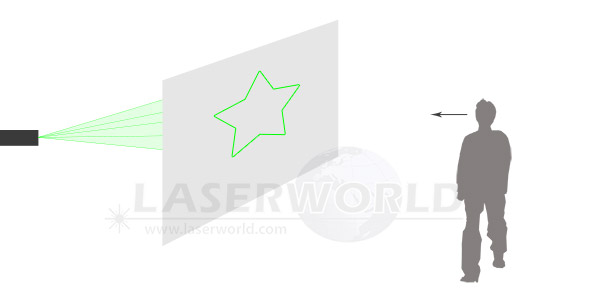
Rear Projection Show with translucent surface
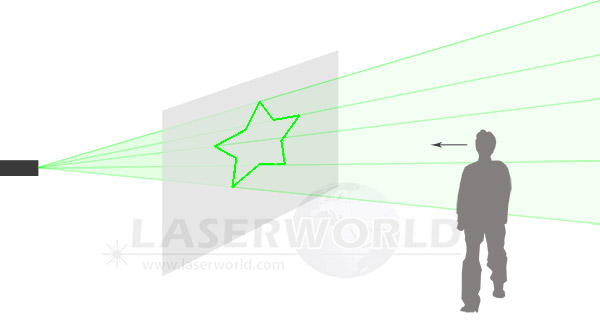
Further information on Laser Screens
What is an RGB Laser?
RGB lasers are show laser systems with exactly three color modules: red, green and blue. It doesn't matter if the color sources are DPSS, OPSL oder Diode laser modules. By combining the three colors, whitelight laser effects are possible.
What is the best RGB Laser?
It depends on your venue, which RGB laser suits best for your purposes. The bigger the location, the more output power you will need. If you want to display demanding graphics projections, you'll need RGB lasers with fast scanning systems. For long distance projections, high power and low divergence are required. If you want a good white balance, then a show laser with nearly equal power distribution will be the best choice - e.g. the RTI NANO RGB 30.
Are there show lasers with more colors?
Basically you can display most colors with an RGB laser system that allows for analog modulation by mixing red, green and blue tones. A typical analog-modulated RGB projector has 256 brightness levels for each laser. This gives (256 x 256 x 256) 16,777,216 different available colors. But if you want your laser with a broader chart of color range, we recommend a Rainbow Laser. They add to the common RGB sources the colors cyan and orange, sometimes even lime.
An RGB laser with TTL modulation - color on or off - can display seven colors: red, green, blue, cyan, magenta, yellow, white.
Do I need an RGB Laser?
That depends what you want to do with the laser display. Laserworld also offers single green, single blue and single red laser systems, but for most spectacular show laser lighting effects more colors are recommended.
What is a Rainbow Laser?
A rainbow laser is a show laser light system that is capable of multi colored beams that look like a rainbow. For that special kind of effect the show laser needs at least the three color sources red, green, and blue as well as analog modulation to be able to display the color hues in between. There are also laser devices that offer addiotional OPSL colors like cyan, orange or lime for an even better color graduation effect. This kind of projection is usually done outdoor and can reach for many kilometers. Laser rainbows are a nice and attractive effect and are widely visible.
What show laser is the best Rainbow Laser?
All high power multi-color laser systems that Laserworld offer are capable to do this kind of effect (reach depends on laser power, beam specifications and software settings).
Especially RTI NANO laser systems are often used to create rainbow effects over several kilometers in many different colors.
Laserworld did a Laser Rainbow in Aalen, Germany, in 2012, but many other customers already did too. See for yourself:
Examples of Rainbow Lasers
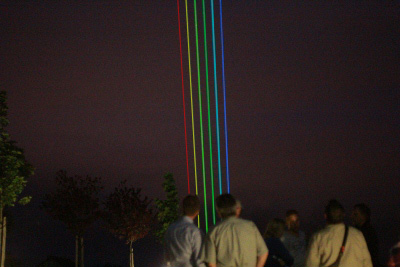
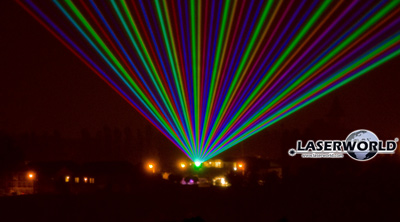
Further information on laser rainbow
- Laser Show Applications - Rainbow Laser
- Laser Show References - Outdoor Laser Show
- Glossary - Laser Rainbow
- Laser Show Applications - Landmark Laser
- Press & PR - RTI NANO Series
The scan speed is specified in pps (points per second) or kpps (kilo points per second) and is used to describe how fast the mirrors of a scanning system move to produce an output image by deflecting the beam. The maximum scan speed of a show laser depends on the quality of the scanning system used. The higher the scan speed, the higher the resolution of the laser graphics.
The possible maximum scan speed depends on the actual scan angle. For graphic projections, a minimum of 25 kpps @ 8° ILDA is recommended. For beam shows, a slower scan speed will usually do the job.
In addition to the scan speed, the quality of a laser output also depends on several different scan parameters, including point repetitions, output optimization as well as the motor performance depending on the scan angle.
What is a Safety Rope?
A safety cable is a wire cable that secures objects like headlights, moving heads and show laser systems from dropping in the case of a failure of the primary suspension or the mounting bracket.
Other terms fo Safety Rope
- Safety Strap
- Safety Cord
- Safety Cable
What is a stage laser?
A stage laser is mainly, but not exclusively, used on a stage in order to make an event with a laser show appealing.
The stage laser can be mounted at the top of the trusses of a stage as well as on the floor or in the lower part of the stage, e. g. a music box. Contrary to its name, the stage laser does not necessarily have to be directed towards the stage - comparable to a spotlight. But in compliance with local safety regulations, however, it is also possible that the stage laser can shoot its laser beams out of the stage area. This can create atmospheric effects in the audience that will feel right in the middle of the stage show.
A stage laser rarely comes alone. Already two stage lasers provide a symmetric arrangement for inspiring lighting effects, which lend additional brilliance to the events on stage. With each additional stage laser, the laser show is extended by a component that provides even more brilliance. Thus, beam shows and graphic projections on and in front of the stage are possible simultaneously.
Where is a stage laser used?
If the action on the stage takes place in broad daylight, it may be advisable to use one or more fog machines depending on the output of the stage laser to increase the visibility of the laser beams. Stage lasers have already been used for musical events, dance and ballet choreographies, festivals, tours, TV shows, film screenings, readings, theatre productions and many other events. Due to the flexible application possibilities, a stage laser is suitable for almost all kinds of events. With a stage laser, a logo or text can be projected onto the wall, or an entire story can be told by animated graphics.
Which show laser is suitable as a stage laser?
Most show lasers are also suitable as stage lasers. Depending on the size of the stage, time of day of the event and the type of laser show, however, certain laser devices are more suitable than others. If the stage is outdoors, for example, or if the stage is not covered, a laser system with a protection class that distinguishes the housing of the laser as weatherproof and waterproof is suitable. On a large stage with a huge audience area, where the rear seats are several hundred meters away from the stage, it is worth purchasing a more powerful laser projector so that the laser show is clearly visible. Thanks to their high-end scanning systems, some lasers are also better suited for graphic projections than other lasers.
It is therefore advisable to select the stage laser according to the overall concept of the show taking place on stage.
What is a scanner?
A scanner is a device that scans and measures objects systematically to generate an overall image. Laser systems use scanners to position or steer the laser beam. Show laser systems use galvanometer scanners (galvo systems). Galvanometer scanners are rotary drives consisting of a motor (moving magnet technology) combined with a position detector. The galvanometer principle is used for the fast positioning of laser mirrors in order to diffract the laser beam in a certain direction.
Scanners consist of two of these galvos: one for the horizontal, one for the vertical deflection of the laser beam.
Different kinds of Scanner Blocks
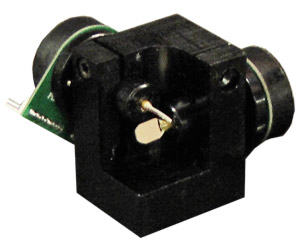
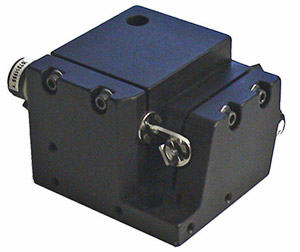
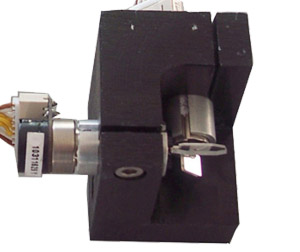
More information on Scanner
What is a Safety Button?
A laser safety button serves to interrupt the current supply manually in case of emergency. Safety buttons are mainly used in cases where there is no seperate interlock interface available at the laser projector. As laser radiation can cause bad demages on eyes, skin and textiles it is important to take certain safety precautions.
Safety Button
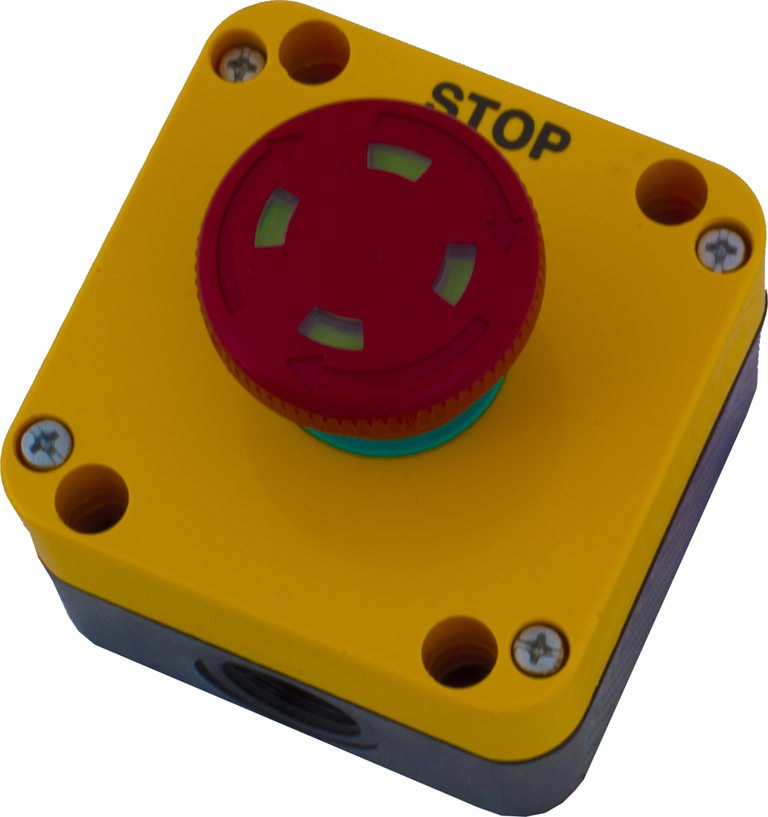


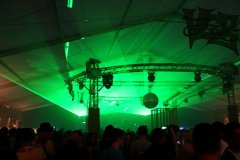
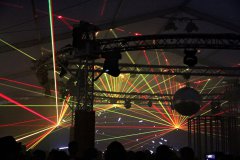
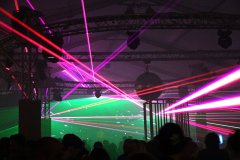
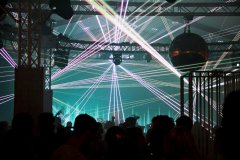
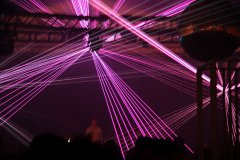
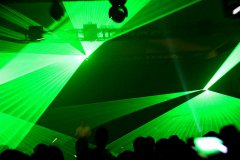
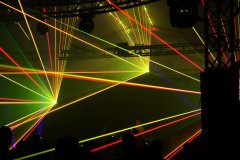
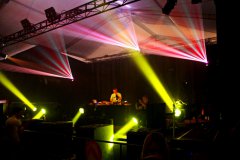
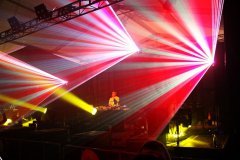
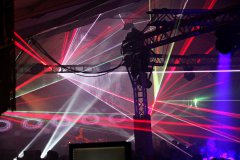
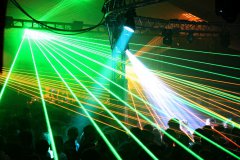
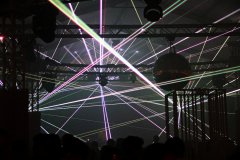
Distributed brands: